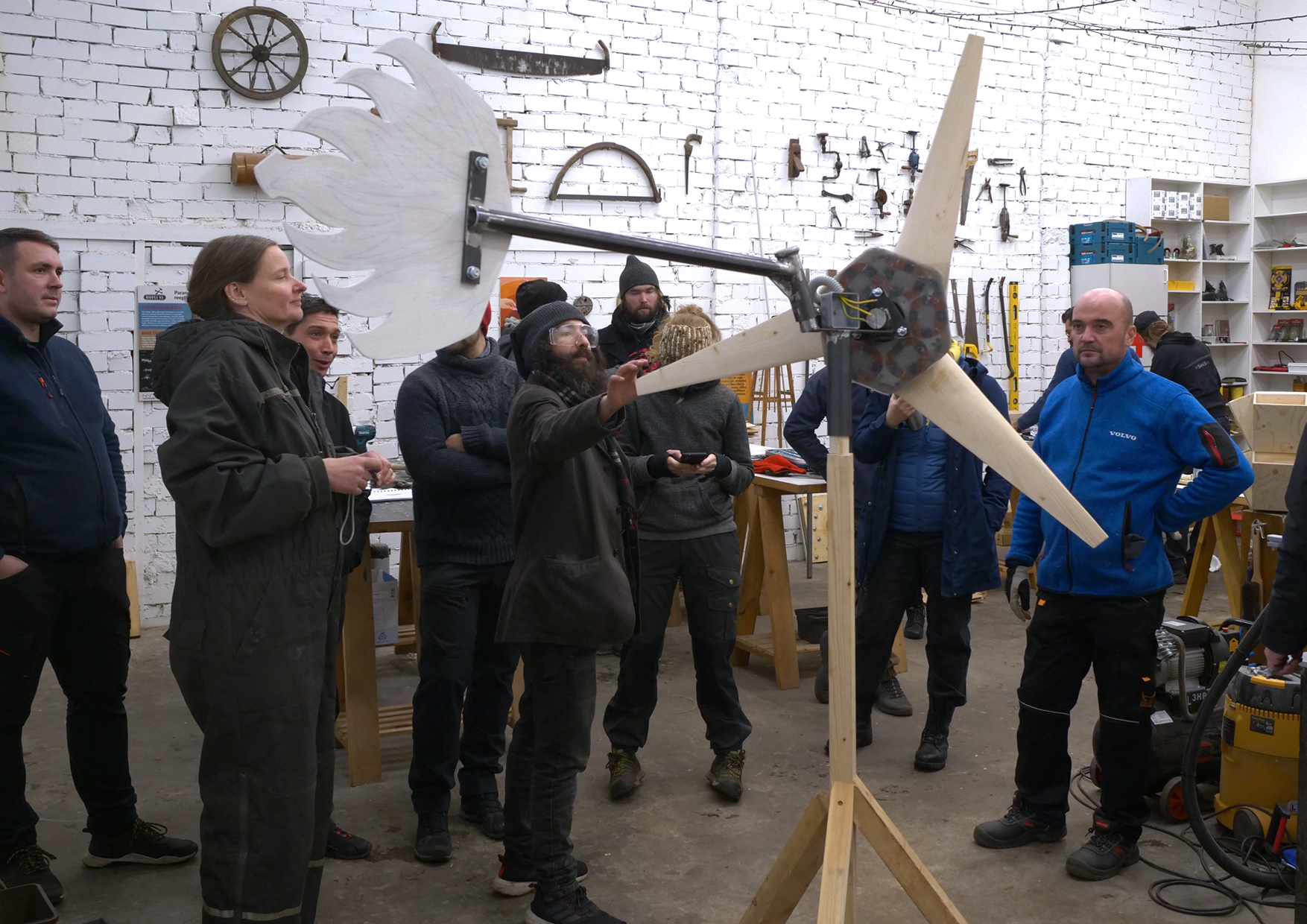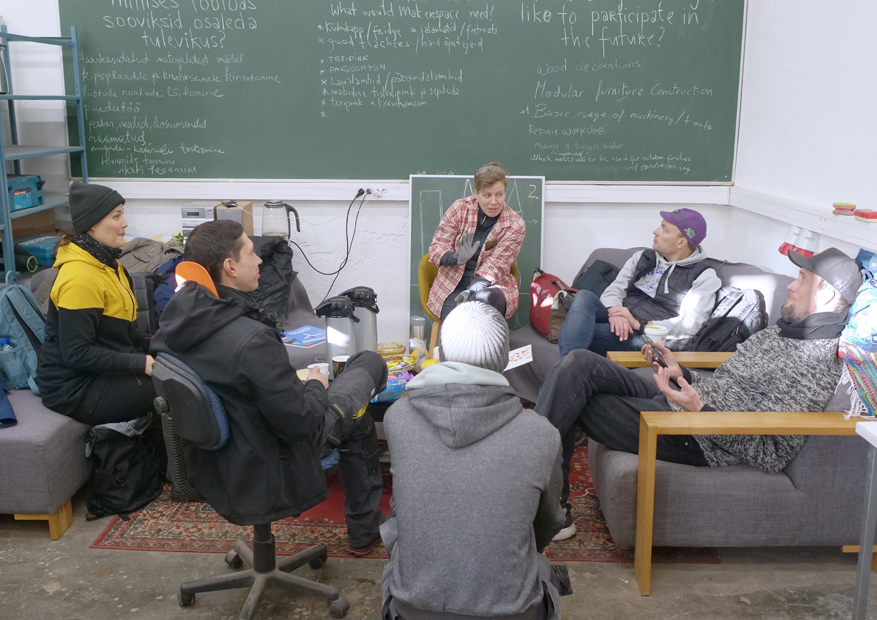Kopli 93’s Makerspace opened its doors during the second edition of the Kopli Makers Festival held in Tallinn, Estonia, on August 21, 2022. Three months later, and in response to a growing energy crisis, the makerspace hosted its first major event: an international workshop to manufacture a small wind turbine.
The workshop, held between November 17 and 20, involved more than twenty participants and over ten local and international stakeholders, including public institutions, universities and research groups, EU projects, and others. The instructor in charge of leading and coordinating the four-day and 32-hour workshop was Kostas Latoufis, founder of Nea Guinea and member of the Wind Empowerment network.
Gathering the participants and organizing the work
The selection process of the participants was carried out through an open call. The open call aimed to attract engineers, designers, creators and enthusiasts to create the small wind turbine and discuss energy, open source, replicability and distributed production.
On November 17 at 10 a.m., the selected participants met at Kopli 93 to start the first working day. After enjoying some snacks and making the usual introductions, the instructor distributed the participants into three workstations or workgroups: one to build the wooden parts of the turbine, one for the metal parts, and finally, one to build the generator.
Parallel work on the three workstations alternated with tasks performed all together during the rest of the workshop.

Working in parallel at the workstations
The organisation of work in workstations aimed to maximise interaction while creating shared experiences among participants. The progression in the difficulty of the tasks performed was gradual.
The work at the wood workstation followed a direction of increasing detail. First, the participants started with the rougher grain tasks and progressed to the finer ones. In this way, they made templates for the wooden parts, the blades, the tower, and the tail vane.
The work at the metal workstation followed a direction of increasing difficulty. First, the participants familiarised themselves with the welding technique. Then they made the simpler metal parts and, finally, the more difficult ones. So they built the yaw bearer, the metal parts of the tail and adapted the trailer hub purchased to the turbine.
The last workstation was the generator workstation. The participants made the moulds and templates, built the generator parts, and used resin to protect them.
Manufacturing a wind turbine, building a community
Part of the wind turbine manufacturing was done collectively. In these collective tasks, the instructor took a more central role, organizing the work, giving instructions or helping the participants to make parts of the turbine particularly difficult.
However, collective activities were not restricted to manufacturing the turbine but also included refuelling activities and workspace cleaning and maintenance.
The tea break emerged as an unplanned improvised ritual consisting of about 20 minutes daily. At mid-morning, participants slowed down the flow of work to relax and warm up with a hot tea.
A local caterer supplied the lunch. The workspace became an improvised dining room, where, using the available furniture and chairs, participants spent an hour a day exchanging knowledge and chatting. Waste collection and sorting for recycling were carried out by the attendees.
Finally, the participants and the instructor spent the last few minutes each day restoring the workspace to its initial state.
These activities were an opportunity to create bonds among the participants, allowing a more intimate and relaxed interaction, taking responsibility and increasing the feeling of belonging to an emerging community of like-minded people around the makerspace.
Hard work paid off
After four days of intense work and many conversations, on the last day of the workshop the small wind turbine was finished, standing at 1.2m in diameter, with 0.6m blades, a voltage of 12V, eight magnets in a single rotor disc, and six coils in the stator.
The correct operation of the turbine was then tested by means of a multimeter and an LED light, and the participants’ efforts were acknowledged in a diploma ceremony chaired by the instructor and the Kopli 93 Project Coordinator.
The turbine is currently on display at the Kopli 93 Makerspace. It is mounted on a wooden tower of about two metres, built to support it temporarily. It is customised, with a phoenix-shaped tail that captures the feeling of the community at the time of its construction.
Activities are carried out within the Horizon 2020 project CENTRINNO.
If you want to know more about the workshop, these materials may be helpful:
A story by Fab City Foundation
